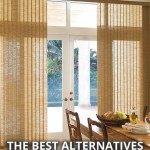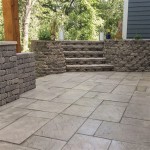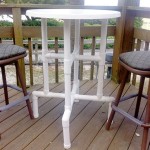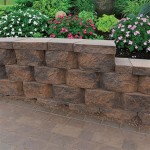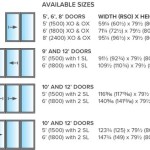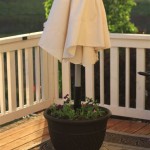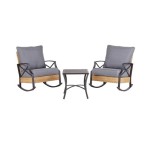Temporary Patio Covers: A Comprehensive Guide
Temporary patio covers offer a flexible and cost-effective solution for homeowners and renters seeking to extend the usability of their outdoor spaces. Unlike permanent structures, these covers are designed for easy installation and removal, providing adaptable protection from the elements without the commitment of a fixed addition. The selection and implementation of a temporary patio cover require careful consideration of various factors, including material durability, structural integrity, installation methods, and aesthetic compatibility with the existing environment.
The demand for temporary patio covers stems from a desire to maximize outdoor living areas throughout the year. Whether to shield against intense sunlight during summer months, provide shelter from rain and wind, or simply create a more defined and comfortable outdoor space, these covers address a range of needs. Their temporary nature allows for seasonal adjustments, enabling homeowners to adapt their patios to changing weather conditions and personal preferences.
This article examines the various types of temporary patio covers available, the key considerations for selecting the appropriate cover, and the practical aspects of installation and maintenance. Understanding these factors is crucial for making an informed decision that meets specific needs and ensures long-term satisfaction.
Understanding the Types of Temporary Patio Covers
The market offers a diverse range of temporary patio cover options, each with unique characteristics and suitability for different applications. These can be broadly categorized by their structural design and the materials used in their construction. Common types include canopies, shade sails, pop-up gazebos, retractable awnings, and temporary pergolas.
Canopies: Canopies are typically freestanding structures consisting of a fabric covering supported by a metal or plastic frame. They are relatively easy to set up and take down, making them ideal for temporary events or seasonal use. Canopy fabric options range from lightweight polyester to more durable canvas, offering varying degrees of protection from sun and rain. The frame material also impacts the overall stability and longevity of the canopy. Aluminum frames are lightweight and rust-resistant, while steel frames offer greater strength but may be susceptible to corrosion if not properly treated.
Shade Sails: Shade sails are tensioned fabric structures that are anchored to multiple points, creating a visually appealing and effective shading solution. They are often triangular or rectangular in shape and are installed by stretching the fabric between existing structures, such as trees, walls, or posts. Shade sails offer excellent UV protection and can significantly reduce the temperature in the shaded area. The fabric used in shade sails is typically a durable, UV-resistant polyethylene or polyester mesh, designed to withstand wind and sun exposure. Proper installation is crucial to ensure the sail is securely anchored and able to withstand weather conditions.
Pop-up Gazebos: Pop-up gazebos are portable structures that can be quickly erected and dismantled. They typically feature a collapsible frame and a fabric roof, offering instant shelter from the elements. Pop-up gazebos are popular for outdoor events, picnics, and temporary patio coverings. While convenient, they are generally less robust than other types of temporary patio covers and are not suitable for prolonged exposure to harsh weather conditions. The frame is usually made of steel or aluminum, and the fabric is typically a water-resistant polyester or PVC.
Retractable Awnings: Retractable awnings offer a more sophisticated and versatile solution for creating shade and protection on a patio. These awnings are mounted to the wall of a building and can be extended or retracted as needed. They provide excellent sun control and can also offer protection from light rain. Retractable awnings are available in manual and motorized versions, with motorized awnings offering the convenience of remote control operation. The awning fabric is typically a durable acrylic or polyester that is resistant to fading and mildew. Professional installation is often recommended to ensure proper mounting and operation.
Temporary Pergolas: Temporary pergolas offer a decorative and functional way to create a shaded area on a patio. These structures typically consist of a framework of vertical posts and horizontal beams, often covered with a lattice or fabric. Temporary pergolas can be constructed from wood, metal, or composite materials and can be easily assembled and disassembled. They provide a partial shade and can be enhanced with climbing plants to create a more natural and inviting outdoor space.
Key Considerations for Selecting a Temporary Patio Cover
Choosing the right temporary patio cover requires careful evaluation of several factors, including the intended use, the size and configuration of the patio, the prevailing weather conditions, and the budget. A thorough assessment of these considerations will ensure that the selected cover meets the specific needs and provides adequate protection and comfort.
Intended Use: The primary purpose of the patio cover will significantly influence the selection process. If the cover is intended for occasional use during outdoor parties or events, a pop-up gazebo or canopy may be sufficient. For more frequent use or for creating a dedicated outdoor living space, a retractable awning or shade sail might be a better choice. Consider the types of activities that will be taking place on the patio and the level of protection required.
Patio Size and Configuration: The dimensions and shape of the patio will dictate the size and type of cover that can be effectively used. Measure the patio area accurately and consider any obstructions, such as trees or walls, that may impact the installation. For large patios, multiple canopies or shade sails may be necessary to provide adequate coverage. For irregularly shaped patios, custom-designed shade sails or retractable awnings may be the best option.
Weather Conditions: The local climate and prevailing weather conditions are crucial factors to consider. In areas with frequent rain or strong winds, a durable and weather-resistant cover is essential. Look for covers made from waterproof or water-resistant materials and designed to withstand wind loads. Shade sails should be installed with proper tensioning to prevent sagging or tearing in high winds. Retractable awnings should be retracted during severe weather to prevent damage. In hot and sunny climates, choose a cover with excellent UV protection to reduce the temperature and protect against sunburn.
Budget: The cost of temporary patio covers can vary significantly depending on the type, size, materials, and features. Set a budget before starting the selection process and consider the long-term value and durability of the cover. While less expensive options may be tempting, they may not provide adequate protection or last as long as more durable alternatives. Consider the cost of installation, if applicable, and factor in any maintenance expenses that may be required.
Aesthetic Compatibility: The patio cover should complement the existing style and design of the home and landscape. Choose a cover that blends seamlessly with the surrounding environment and enhances the overall aesthetic appeal of the outdoor space. Consider the color, texture, and design of the cover and how it will impact the look and feel of the patio. Shade sails and pergolas can add a touch of elegance and sophistication, while canopies and pop-up gazebos offer a more casual and functional look. Select a cover that reflects personal style and creates a welcoming and inviting outdoor space.
Installation and Maintenance of Temporary Patio Covers
Proper installation and regular maintenance are essential for maximizing the lifespan and performance of a temporary patio cover. Following the manufacturer's instructions and adhering to recommended maintenance practices will ensure that the cover provides reliable protection and enjoyment for years to come.
Installation Procedures: The installation process will vary depending on the type of patio cover chosen. Canopies and pop-up gazebos typically require minimal assembly and can be set up in a matter of minutes. Shade sails require more careful planning and installation, as they must be securely anchored to multiple points. Retractable awnings often require professional installation to ensure proper mounting and operation. Always follow the manufacturer's instructions and use the appropriate tools and hardware. Ensure that all connections are secure and that the cover is properly tensioned to prevent sagging or damage.
Securing the Cover: Temporary patio covers are susceptible to wind damage, so it is crucial to secure them properly. Use stakes or weights to anchor canopies and pop-up gazebos to the ground. Shade sails should be anchored to sturdy structures, such as trees, walls, or posts, using heavy-duty hardware. Retractable awnings should be securely mounted to the wall of the building. Regularly inspect the anchors and connections to ensure they are secure and in good condition. In areas with high winds, consider removing the cover or retracting awnings to prevent damage.
Cleaning and Maintenance: Regular cleaning and maintenance will help to prolong the lifespan of the patio cover and keep it looking its best. Remove dirt, debris, and leaves from the cover regularly using a soft brush or hose. For more stubborn stains, use a mild soap and water solution. Avoid using harsh chemicals or abrasive cleaners, as they can damage the fabric or frame. Inspect the cover regularly for tears, rips, or damage and repair them promptly. Store the cover in a dry and protected place when not in use to prevent mildew and deterioration.
Seasonal Storage: When the patio cover is not needed, such as during the winter months, it is important to store it properly. Disassemble the cover and clean it thoroughly before storing it. Store the cover in a dry and protected place, such as a garage, shed, or basement. Protect the cover from moisture, pests, and extreme temperatures. When storing shade sails, fold the fabric neatly and store it in a breathable bag to prevent mildew. Retractable awnings should be retracted and covered to protect them from the elements.
By understanding the various types of temporary patio covers available, considering the key factors for selection, and following proper installation and maintenance procedures, homeowners can create a comfortable and functional outdoor living space that enhances their enjoyment of their property.

11 Patio Cover Ideas Anyone Can Diy Backyard Covered Patios

Permanent Vs Temporary Patio Covers Sunshine Sunrooms

Covered Patio Ideas On A Budget Simple Made Pretty 2024

11 Patio Cover Ideas Anyone Can Diy The Garden Glove

26 Patio Shade Ideas To Help You Stay Cool Timbertech

Patio Cover Ideas The Home Depot

Winter Screen Porch Enclosure Panels Clear Curtains

9 Temporary Patio And Deck Enclosures For Winter Timbertech

10 Patio Shades Ideas Tips To Cool Off Outdoors From Bob Vila

9 Temporary Patio And Deck Enclosures For Winter Timbertech

